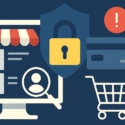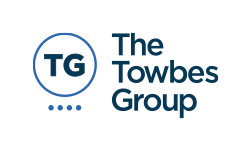New Year Resolution: Add E-commerce to Your Online Presence

Over the past year we have seen some major shifts in how people are shopping. According to Shopify, who surveyed 11 markets, 84% of consumers shopped online during the pandemic.¹
With more people sheltering in place and staying home, it’s not surprising that most people decided to shop online. This includes everything from groceries to hygiene products and other everyday essentials that were typically bought in person. People want to buy these things in a way that’s safe, convenient and fast.
This shift accelerated the growth of e-commerce last year resulting in $794.50 billion in sales in the United States alone. ²
It’s not just big box stores and giants like Amazon benefiting from this boom either, since the numbers show that customers also want to support independent retailers. They care about supporting the local economy.
Getting Started and Scaling
If you are wanting to start or scale your product based business, e-commerce is an essential component of that.
The first step is to decide what platform you want to use for your website. Different sites may fit your current needs and budget but it’s also important to plan ahead to where you want to take your business and which platform might be needed for your long term goals.
Three well-known options to choose from are WooCommerce, Magento and Shopify.
E-commerce Platform Considerations
There are pros and cons to everything, including where you build your e-commerce site. Below are some points to consider when choosing the right platform for your business.
Shopify:
Pros:
- Fast setup and easy to use
- They offer a 14 day free trial
- Has a variety of customer payment options
- 24/7 customer service
Cons
- Limited free templates
- Costs up to $299/month
- Additional transaction fees for third party payment gateways
- Shopify has control over your store and the site’s data
- Additional customization is a paid feature
- You have to pay a fee to back up your website design and settings
Magento:
Pros
- Offers a free open-source version
- No transaction fees
- Allows for an unlimited number of products
- Offers more than 100 free themes
- Excels in e-commerce with extensive features
Cons
- Customization requires technical experience and hiring a developer may be necessary
- Does not have 24/7 support
- Some themes and extensions can cost upwards of $300
- Enterprise edition starts at $22,000
WooCommerce:
Pros
- Free plugin
- User-friendly
- Compatible with any WordPress theme
- Built-in payments via PayPal and Stripe, while also accepting bank transfers and cash on delivery payments
- Unlimited products and product categories
- You have total control over your data
- Allows you access to everything needed to optimize your SEO
- Free backup options
Cons
- If you have a brand new site, there may be more time needed on the front end to get hosting and domain set up
- File storage is limited by your web host
Our top recommendation is WooCommerce for a few reasons. WooCommerce is easier to use and less costly than Magento but also offers more control than Shopify.
Multi-Channel Selling
Once you decide on the platform you want to use, there are many ways to improve the online shopping experience for your customers.
This may include providing multiple ways for them to make purchases through their preferred channels, like Instagram and Facebook.
Many people enjoy the convenience of buying things from the page they’re on rather than being re-routed to other sites. It’s important to make sure it’s as easy as possible for them to complete the purchase.
Making your site user-friendly
If you’ve been in the e-commerce world for some time or are brand new to the space, it’s essential to have a user friendly site on mobile and on tablet. Mobile e-commerce sales are projected to reach 54% of the e-commerce industry this year. ³ That is over half the market and too big of a chunk to miss out on.
If the user finds a site hard to navigate, takes too long to load or they don’t like the way it looks, they will leave. So you need to walk through your site and test it as a consumer.
There are tools online that allow you to view your website as if you were seeing it from different devices and browsers. This can help you view your site just as potential customers would, and see what needs to be done to fix it.
Moving forward
With new technologies constantly popping up and industry changes continually happening, it can often be easier to hire a professional to help guide you through the process. If you’re looking to revamp your current e-commerce website, take your brick and mortar store online or start a new venture, we can help. Contact us today to get started.
Sources:
https://cdn.shopify.com/static/future-of-commerce/Shopify%20Future%20of%20Commerce%202021.pdf
https://www.emarketer.com/content/us-ecommerce-growth-jumps-more-than-30-accelerating-online-shopping-shift-by-nearly-2-years


































